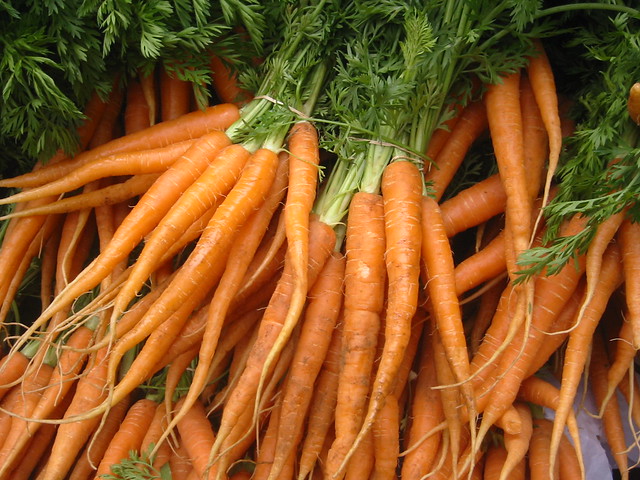By William Radin, Rashi Rattan, Ethan Chiang (Section 2)
Jeremy Keith via Flickr CC by 2.0
The carrot is a (usually) orange vegetable that is a staple in many cuisines around the world. They are grown in the ground and cultivated for their taproots, the well known orange vegetable. The leaves on the top of the carrot are not usually eaten, and are discarded when carrots are eaten.
Here is only one example of the many farms that grow carrots here in New Jersey:
Carrots today are one of the main vegetables eaten in American cuisine. Many salads, soups, as well as healthy snacks include these orange vegetables. The United States is the fourth largest producer of carrots in the world. Many places all over the nation grow carrots, including here in New Jersey. However, a closer look at the history of carrots shows a surprising Dutch influence.
The most surprising fact to many people is that carrots actually come in all different colors, from purple to yellow to red to white! While the carrot most likely originated in Central Asia, it made its way both West and East. While Eastern carrots were purple, slowly the yellow rooted carrot made its way to Europe by the 13th century.
The Dutch were the ones to selectively breed the orange carrot. Modern genetic studies show that they took the yellow rooted carrot and over generations, created an orange carrot that was healthier and less bitter. Despite common folklore, the carrot was not orange to honor the Dutch House of Orange, but rather was made the official Dutch vegetable afterwards.
With the advantages of the orange carrot over the other hues of carrots, the orange carrot the sole type of carrot planted in Europe. As part of the Colombian Exchange, the carrot made its way to the New World aboard Spanish, English, and Dutch ships. Today, the importance of the carrot as a crop is unprecedented, and it continues to be a healthy snack for all.
We chose this topic because very few people think about the history of their food, and we were surprised to see that such a common crop actually had Dutch roots. The domestication of the carrot is only one of the accomplishments of the Dutch that go unnoticed, yet it is a case of agricultural advancement for the time period, once again showing that the Dutch managed to become a world power in such a short time!
Works Cited:
http://www.carrotmuseum.co.uk/
http://www.agrilicious.org/Summer-Wind-Farms
https://en.wikipedia.org/wiki/Carrot

